Timpanogos Chief Black Hawk c1838 - 1870
Artist Carol Pettit Harding 2019
The Utah Black Hawk War: Extermination of the Timpanogos
Nation
by Historian Phillip B Gottfredson
The definitive cause of the Black Hawk War in Utah was Brigham Young's order to "exterminate" the Timpanogos Nation beginning in 1849. The War was not a single event. Mormon Settler colonialism subjugated the Timpanogos to nearly 30 years of widespread starvation, a smallpox epidemic, over 150 violent encounters, loss of land, and over eight brutal massacres. These events resulted in a 90% decrease in their population and caused irreversible damage to their culture. Not until 1865, sixteen years later, did Black Hawk become the war Chief of the Timpanogos under the Nation's principal Chief Tabby.
Was it Black Hawk's War? Not according to Timpanogos historian Phillip B Gottfredson. There wasn't any 'Indian Problem' until the Mormons came. Then, there was a Mormon problem. When Brigham Young ordered the extermination of the Timpanogos, it was Brigham Young's War. See Timpanogos Nation Biography & The Utah Black Hawk War
Settler Colonialism!
According to Cornell Law School, "The concept of settler colonialism can be defined as a system of oppression based on genocide and colonialism that aims to displace a population of a nation (often indigenous people) and replace it with a new settler population. Visit Cornell Law School for a deeper definition.
Historians at Brigham Young University often date the Utah Black Hawk War from 1865 to 1872. Starting the timeline in 1865 ignores nearly two decades of earlier conflict and important events critical to our understanding of the Mormon's Black Hawk War. Saying 'both sides were equally at fault' does not fully explain the situation. Records show that actions by Mormon settlers impacted Timpanogos' land, sovereignty, and treaty rights, leading to irreversable damage to the their culture. These issues played an important role in subjugation of the Timpanogos, it was more than just cattle theft, it was genocide.
We respectfully acknowledge that Brigham Young University has the right to offer its perspective to align with its religious views. However, in our view, this perspective does not reflect that leaders of the Timpanogos Nation who pursued peace until Black Hawk's death in 1870, who fought in defence of their land-rights and traditional lifeways.
Untethered by religious constraints, a broader narrative of Utah's Black Hawk War, emerges through The Black Hawk War Project. Founded in 1990 by Phillip B Gottfredson, and supported by both Native and non-Native donors, the project compiles over two decades of ethnological research while living with not just Utah's Native Americans, but comparing the effects of settler colonialism on Indigenous people throughout North and South America. This approach offers an alternative to one-sided history. It is guided by the premise that 'the truth must be told regardless of what happened.' See Source Material
The Timpanogos Perspective
From the Timpanogos Nation’s perspective, the War began in 1847 with the arrival of the Mormon colonists and ended in 1873. This 26-year period, distinct from the BYU account, brought major shifts in the region’s demographics, land use, and power. Take a close look at Gottfredson's Utah Black Hawk War Timeline and pay particular attention to the number of events leading up to 1865.
Beginning in 1846, at the rate of some three thousand a month, new Mormon arrivals sprawled out into the ancestral home of the Timpanogos, disrupting the natural order of all living things. They killed deer, elk, and buffalo and depleted the fish population in the Timpanogos River (also known as the Provo River) and Timpanogos Lake (also known as Utah Lake). They diverted and polluted water sources, the environment that First Nations solely depended upon for food, medicines, and life-sustaining necessities. With the rapid increase in the Mormon population, agricultural development, and barbed wire, the Timpanogos soon ran out of territory for a sanctuary vital to their culture, a gross injustice that we cannot overlook. This is what settler colonialism looks like.
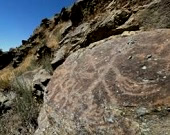 First Nation peoples have inhabited Utah Territory long before white colonists arrived, they are the ones who need to be telling tell their history to provide depth and cultural sensitivity. For example, believing Indigenous people were heathens and savages are racial slurs, a fixed mind-set that is straight out of the colonial period dating back to the 1500s and the Doctrine of Discovery.
First Nation peoples have inhabited Utah Territory long before white colonists arrived, they are the ones who need to be telling tell their history to provide depth and cultural sensitivity. For example, believing Indigenous people were heathens and savages are racial slurs, a fixed mind-set that is straight out of the colonial period dating back to the 1500s and the Doctrine of Discovery.
Brigham Young's 'extermination order' in 1849, triggered violent confrontations. Brigham Young famously said, "I say go [and] kill them…Tell Dimick Huntington to go and kill them—also Barney Ward—let the women and children live if they behave themselves…We have no peace until the men [are] killed off—never treat the Indian as your equal." Source BYC, Microfilm reel 80, box 47, folder 6. Farmer, Jared (2008). On Zion's Mount: Mormons, Indians, and the American Landscape. Harvard University Press. ISBN 9780674027671 See Brigham Young's Extermination Order No. 2
 Professor Dr. Daniel McCool University of Utah summed it up succinctly: "We took from them almost all their land—the reservations are just a tiny remnant of traditional tribal homelands. We tried to take from them their hunting rights, their fishing rights, the timber on their land. We tried to take from them their water rights. We tried to take from them their culture, their religion, their identity, and perhaps most importantly, we tried to take from them their freedom. See End Settler Colonialism in Utah!
Professor Dr. Daniel McCool University of Utah summed it up succinctly: "We took from them almost all their land—the reservations are just a tiny remnant of traditional tribal homelands. We tried to take from them their hunting rights, their fishing rights, the timber on their land. We tried to take from them their water rights. We tried to take from them their culture, their religion, their identity, and perhaps most importantly, we tried to take from them their freedom. See End Settler Colonialism in Utah!
Congress Never Ratified A Single Treaty In Utah
The late University of Utah historian Floyd O'Neil describes, "There were no treaties made between the Indian people of Utah and the Church of Jesus Christ of Latter-day Saints. Only 'agreements' were made. At best, these agreements were divisive, designed to trick the Indians into giving up their land. They were not legally binding."
Brigham Young's objective was to take possession of the Timpanogos' ancestral land and vital resources, without any compensation or legal treaties. They did, however, give the Timpanogos a book that says, "Thou shalt not steal." As the late Will Bagley, a prominent historian and a consultant to Phillip, aptly noted, "There's nothing in the story of the Black Hawk War that honors the legacy of our ancestors."
Despite popular belief that the Spanish Fork Treaty of 1865 brought an end to the war, the fact is that it was never ratified by Congress. However, Congress expressed a preference, "We would rather the Indians to have the land than the Mormons."
Timpanogos chief Black Hawk Wasn't Ute!
Twenty years of research categorically establishs that Chief Antonga Black Hawk was a prominent figure of the Snake-Shoshone heritage and indisputably belonged to the Timpanogos Nation. The Timpanogos Nation clearly states and documents that they and the Ute Tribe are entirely distinct; they do not share historical origins, genealogies, bloodlines, or cultural practices. Claims that suggest a connection between the two are factually incorrect. The Timpanogos Nation is rightfully classified as a Snake-Shoshone tribe and maintains no affiliation with the 'Ute Tribe of the Uintah and Ouray Reservation.'
My great-grandfather, Peter Gottfredson, lived among the Timpanogos during the mid-to-late 1800s. A friend of Black Hawk, who later became the war Chief of the Timpanogos, he was invited into his camp numerous times, and they were about the same age. Peter often spoke about the Timpanogos in his book Indian Depredations In Utah.
Black Hawk's father, Chief Sanpitch, along with chiefs Old Elk Moonch, Wakara, Arapeen, Ammon, Sowiette, Grospeen, and Tabby, were brothers born into the Snake-Shoshone Timpanogos Nation. See The Timpanogos Nation Is Snake-Shoshone.
So, who is more qualified to narrate the story of settler colonialism than its victims, the Shoshone Timpanogos Nation? In 2015, Mary Murdock Meyer, the Chief Executive of the Timpanogos Nation, initiated a collaboration with Phillip B Gottfredson to delve into and share their version and personal account of the Black Hawk War. Phillip underscores, "The Timpanogos perspective is not a mere footnote in the historical narrative of the Black Hawk War; it's a pivotal account that offers a firsthand view of these events." Together, Mary and Phillip embarked on the ground breaking book My Journey to Understand Black Hawk's Mission of Peace. This historical milestone unveils the Timpanogos account of the Utah Black Hawk War for the first time, thereby giving a much-needed voice to the Timpanogos and enriching our understanding of history.
Quoting from Black 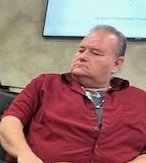 Hawk's Mission of Peace, Phillip, in a heart-to-heart conversation with Perry Murdock, a Council member of the Timpanogos Nation and a direct descendant of Black Hawk's uncle, Chief Wakara, Perry described the severity of the trauma his ancestors experienced.
Hawk's Mission of Peace, Phillip, in a heart-to-heart conversation with Perry Murdock, a Council member of the Timpanogos Nation and a direct descendant of Black Hawk's uncle, Chief Wakara, Perry described the severity of the trauma his ancestors experienced.
"Every day, we are reminded of what our ancestors went through. Our families were torn apart. Children murdered, the old, the women, all those who were brutally murdered and made to suffer and die from violence, then disease, then starvation, our ancestors' graves torn up, the land destroyed, it was genocide plain and simple. Why? What did we do? We didn't do anything. We were living in peace. We were happy. Our children were happy. We loved each other. We cared for each other. And when the Mormons came, we tried to help them. Then they tried to take everything away from us. They wanted it all. They wanted to exterminate us, wipe us off the face of the earth. Why? For our land? For our oil? Now we have nothing."
Perry also noted, "... the Mormons got involved and lied to the Utes about us, and they lied to us about the Utes. They made us so we didn't trust each other and we began to fight each other. They didn't care about us, all they wanted us to do was fight each other, tear us apart, take our land..." "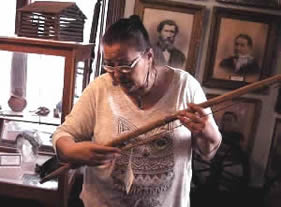
Mary Murdock Meyer, Perry's sibling, and a direct descendant of Chief Arapeen, a brother of Wakara, wrote, "As Chief Executive of the Timpanogos Nation, I speak for the people when I ask why? We fed you when you were hungry. We helped you when you did not understand our lands. Why then were we forgotten?" Visit The Timpanogos Nation Website
Quoting Timpanogos Chief Wakara in a statement to Indian Agent M. S. MARTENAS July 6, 1853. "They were friendly for a short time until they became strong in numbers, then their conduct and treatment towards the Indians changed—they were not only treated unkindly—they have been treated with much severity—they have been driven by this population from place to place—settlements have been made on all their hunting grounds in the valleys, and the graves of their fathers have been torn up by the whites..."
The following are just eleven out of 150 events that were extremely traumatizing for the Indigenous people of Utah, between Mormon settlers and the Timpanogos Shoshone during the years 1849 to 1866.
The Battle Creek Canyon Massacre - Pleasant Grove, Utah
The Battle Creek Massacre in the winter of 1848-49 was a prelude to the Black Hawk War. Brigham Young falsely accused a small group of the Timpanogos Nation of stealing his horses. This led to the tragic deaths of three innocent individuals and the capture of a vulnerable young boy named Nu'intz, whom Brigham Young would later call Black Hawk. More>
The Murder of Old Bishop
Brutality in Utah's Native American history are numerous; the murder of a Timpamogos elderly man, the Mormons called Old Bishop, occurred on the 1st of August, 1849, at Fort Utah in Provo. Accused of stealing a shirt from a clothesline, he was murdered in cold blood, disemboweled, his stomach filled with rocks, and thrown in the Provo River. More>
Fort Utah Massacre
January 1850, Brigham Young orders the extermination the Timpanogos. The Mormon vigilantes helped themselves taking the belongings from the dead, while Bill Hickman, with knife in hand, hacked Old Elk's head off his frozen body. He said Jim Bridger had offered him a hundred dollars for the head. Old Elk's wife refused to be taken captive. More>
Massacre at Table Point
January 1850, “The violence shifted from warfare to killing.” After disarming a large band of Timpanogos at Table Point near the southern edge of Utah Lake, the militiamen shot them down in cold blood... then decapitated..." More>
Mountain Meadows Massacre
In the Mountain Meadows Massacre, 1857, Major John D. Lee of the Nauvoo Legion led a ragtag band of Latter-day Saints disguised as "Indians" in an assault on a wagon train from Arkansas, murdering 120 men, women, and children. The LDS Church unfairly blamed the Paiute. In 2007, the Church of Jesus Christ of Latter-day Saints, after decades of denial, finally confessed to the Mountain Meadows Massacre. In 1960, the late Church president David O. Mckay said, "By their fruits ye shall know them." More>
The Bear River Massacre
In the Bear River Massacre of 1863, over 493 shoshonee were slaughtered, led by the unashamed Colonel Patrick Edward Connor. Brigham young supplied Connor with troops and equipment. More>
The Grass Valley Massacre
Timpanogos's account of the Grass Valley Massacre 1865 is that when the soldiers first approached their camp, the old Chief showed a soldier a paper from the Bishop of Glenwood that said they were friendly and no harm would come to them. He was the first one shot, and the soldier who shot him then beheaded him with his sword. More>
The Circleville Massacre
Then at the peak of the Black Hawk War in 1866, Bishop William Jackson Allred led the Circleville Massacre of the Koosharem Paiutes. Twenty-six men, women, and children's throats were slit and buried in a mass grave. More>
The Gravely Ford Battle
In June of 1866, Black Hawk's father Sanpitch, had been held captive for 6 months while his captors were hoping to force Black Hawk into submission, but then Sanpitch managed to escape briefly and Dolf Bennett slit his throat. In the same month, Black Hawk was shot in the gut by James E. Snow at the Gravelly Ford Battle while trying to rescue a fallen warrior, Whitehorse. More>
The Old Peace Treaty Tree in Ephram, Utah
1866, one of Black Hawk's few Mormon friends, Canute Peterson of Ephraim, paid a visit to the ailing leader in Cedar City—taking sugar, hams, bread, beads, molasses, tea, coffee, tobacco, flour, medicines, and clothing. Black Hawk promised Canute unconditional friendship for his kindness. More>
Black Hawk's Grave Robbed For Amusement
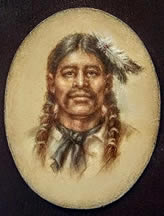 Despite the numerous attempts by Timpanogos leaders to live in peace, Mormon settlers treated them with much severity; one of the most notable examples is the robbery of Chief Black Hawk's grave in 1919. On September 26, 1870, his loving kin honorably laid him to rest on a hillside
Despite the numerous attempts by Timpanogos leaders to live in peace, Mormon settlers treated them with much severity; one of the most notable examples is the robbery of Chief Black Hawk's grave in 1919. On September 26, 1870, his loving kin honorably laid him to rest on a hillside 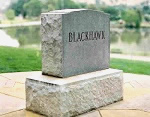 overlooking Spring Lake, the place of his birth—just 49 years passed when Mormons dug up his mortal remains and then exhibited them in the window of a hardware store in Spanish Fork, Utah, and then on Temple Square in downtown Salt Lake City for some sixty years for amusement. We don't see Indigenous people digging up white man's graves, do we? More>
overlooking Spring Lake, the place of his birth—just 49 years passed when Mormons dug up his mortal remains and then exhibited them in the window of a hardware store in Spanish Fork, Utah, and then on Temple Square in downtown Salt Lake City for some sixty years for amusement. We don't see Indigenous people digging up white man's graves, do we? More>
Doctrine of Discovery; The birth of colonialism
Steven T. Newcomb, Indigenous Law Institute and author of "Pagans in the Promised Land" said it succinctly: "Indian nations have been denied their most basic rights ...
simply because, at the time of Christendom's arrival in the
Americas, they did not believe in the God of the Bible, and did not
believe that Jesus Christ was the true Messiah... This is the land promised by the Eternal Father to the Faithful, since we are commanded by God in the Holy Scriptures to take it from them, being idolaters, by reason of their idolatry and sin, to put them all to the knife, leaving no living thing save maidens and children, their cities robbed and sacked, their walls and houses leveled to the earth. This is the basis for the
denial of Indian rights in federal Indian law and remains as true today
as it was in 1823." See The Doctrine of Discovery
Legal Studies Department, University of Massachusetts/Amherst, Peter d' Errico, wrote, "Papal authority is the basis for United States power over indigenous peoples." The Doctrine of Discovery, a five-hundred-year-old decree by Catholic monarchs during the 14th century, was a law based upon Christian doctrine, believing that their religion and culture were above all others, giving Christians and governments throughout the world a legal and moral justification to invade and occupy Native American land. We have some great Videos for more Information.
Note: Pope Francis renounced the 500 year old Doctrine of Discovery as of March 2024.
A New 'ism' Takes Hold Among Colonists, "Racism"
"Race was a fairly new concept among early colonists," wrote Sean P. Harvey, Ph.D. author of Native Tongues available in our bookstore. A product of slavery in the late 1600s, "The concept of 'Race' that took hold in the 1800s created physical and cultural divisions in humanity. It is essential to understand that it was crucial to early American settler colonialism. It provided the foundation for the colonization of Native Land and the enslavement of Native Americans and Africans."
Indian Removal Act & Manifest Destiny 1830
Settler colonialism takes hold in America with Andrew Jackson's systematic 200.jpg) Indian Removal Act of 1830 that opened the way to the forced relocation of Native Americans. It became known as "The Trail of Tears." The 1832 Supreme Court Ruling declared the Indian Removal Act unconstitutional, but the damage already caused to First Nations was irreversible. In time, the Doctrine of Discovery would become Manifest Destiny to justify European Expansion further ignoring Indian Rights all together all under the banner of Christianity and 'righteous dominion.' See how Manifest Destiny opens the way to western expansion.
Indian Removal Act of 1830 that opened the way to the forced relocation of Native Americans. It became known as "The Trail of Tears." The 1832 Supreme Court Ruling declared the Indian Removal Act unconstitutional, but the damage already caused to First Nations was irreversible. In time, the Doctrine of Discovery would become Manifest Destiny to justify European Expansion further ignoring Indian Rights all together all under the banner of Christianity and 'righteous dominion.' See how Manifest Destiny opens the way to western expansion.
Hidalgo Treaty of 1848
Mormon settlers arrived on the Wasatch Front of the Rockies in 1847 during the Mexican-American War. In February 1848, the United States signed the Treaty of Guadalupe Hidalgo that ended the Mexican-American War. In 1850 Utah territory was created which included parts of Colorado when it admitted to the Union in 1876. Utah remained a territory until it was admitted to the Union in 1896.
The significance of the treaty is that it preserved certain Indian rights. According to the Constitutional Rights Foundation, "Mexican negotiators won from the United States multiple promises that Indian land rights would continue as they had been under Mexican law."
Disregarding the Timpanogos' Indigenous treaty rights, Mormon leadership drew their power from the Doctrine of Discovery and Manifest Destiny. Ignoring the supreme laws of the land, LDS Apostle George A. Smith ordered the church's private militia to "remove the Indian people from their land," saying Indigenous people have "no rights to their land." In the name of 'Righteous Dominion' Brigham Young spent over a million dollars in church funds, the equivalent of $35 million today, to "exterminate" the Timpanogos, then billed Congress for reimbursement. See Memorial of the
Legislative Assembly of Utah
When the Civil War ended in 1865, the United States government called for exterminating tribes who resisted giving up their land, and the Government turned its attention toward Western expansion and the U.S. military to 'Indian' fighting. See CONGRESSIONAL ACTS to understand how our government has mistreated Native Americans by creating convoluted laws to subjugate and have dominion over a people who are Indigenous to America.
Eliminating 'Indianness' Through Acculturation...?
Highly publicized massacres of 'Indians' brought the attention of philanthropic groups. American humanitarians proposed a new solution to the 'Indian problem' by eliminating 'Indianness' through acculturation. Christian reformers argued that 'if Indians were assimilated, the Indian problem would vanish.'
The Rocky Mountain News paper quoted Brigham Young saying, "If you want to get rid of the Indians try and civilize them."
In the 1860s, the U.S. adopted a Peace Policy, gradually shifting toward a more peaceful approach, and genocide of Native Americans was officially discouraged. The Peace Policy meant making them wards of the government, forcing Native tribes to reservations and boarding house schools to assimilate them into white culture, thus eliminating Native peoples bloodlessly. The intended effect of the Peace Policy was to prevent the rampant slaughter of Native Americans.
Christianization, education, and cultural development became the means to 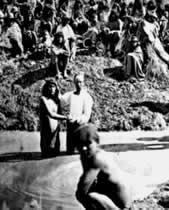 assimilate tribal peoples so that they could be integrated and absorbed by mainstream society. Example, the LDS church converted many of Utah's Native Americans to Mormonism, according to church doctrine, and in so doing, the so-called "loathsome" Indians would become a "white and delightsome people." They would be forgiven of the sins of their forefathers. (Book of Mormon 2 Nephi 5:21-23) According to church doctrine, the nature of the dark skin was a curse, and the cause was the Lord; the reason that the Lamanites (Indians) "had hardened their hearts against him, (God)," and the punishment was to make them "loathsome" unto God's people who had white skins. You won't believe this one: Only In The Land Of The Lamanites.
assimilate tribal peoples so that they could be integrated and absorbed by mainstream society. Example, the LDS church converted many of Utah's Native Americans to Mormonism, according to church doctrine, and in so doing, the so-called "loathsome" Indians would become a "white and delightsome people." They would be forgiven of the sins of their forefathers. (Book of Mormon 2 Nephi 5:21-23) According to church doctrine, the nature of the dark skin was a curse, and the cause was the Lord; the reason that the Lamanites (Indians) "had hardened their hearts against him, (God)," and the punishment was to make them "loathsome" unto God's people who had white skins. You won't believe this one: Only In The Land Of The Lamanites.
Estimated Casualties From Settler Colonialism?
Twenty years of intensive research conducted by Phillip B Gottfredson, in collaboration with Native American scholars and historians, estimates that around 70,000 Timpanogos people inhabited the Great Basin when the Latter-day Saints arrived. According to Gottfredson, "By our calculations, there were nine hundred thirty-two Timpanogos reported deaths, which do not include those who died from starvation and disease, and two hundred thirty-eight Mormon deaths." Remember the Timeline of the Utah Black Hawk War?
Brigham Young proudly claimed at the end of the conflict, "I don't think there is one out of ten, and perhaps not even one out of a hundred, who were here when we arrived." This statement implies that the Timpanogos suffered a staggering death toll. Settlers were responsible for instigating violence, causing starvation, spreading diseases, and poisoning water sources—actions that LDS scholars agree resulted in a 90% reduction in Utah's Timpanogos population.
We must concede that our European ancestors were descendants of the colonial mentality of domination and subjugation. It's why we must teach the Truth In Utah's History Of First Nations Peoples in our schools, communities, and churches.
Brigham Young
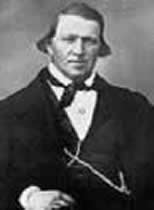 In 1847, Mormons faced ever-increasing hostilities when angry mobs forced them to leave Illinois—following the assassination of Latter-Day Saint Church founder Joseph Smith, a polygamist having 40 wives and a member of the Masonic Order. Joseph Smith's successor, Brigham Young, "the Great Colonizer," with 55 wives and a Masonic Order member, led a massive migration of followers to colonize Utah's Great Basin of the Rocky Mountains. Exterminated the Timpanogos Nation. Aligned with the "Chosen People-Promised Land" model of the Bible," he rationalized they were superior and had a God-given right to Native American land by the Doctrine of Discovery.
In 1847, Mormons faced ever-increasing hostilities when angry mobs forced them to leave Illinois—following the assassination of Latter-Day Saint Church founder Joseph Smith, a polygamist having 40 wives and a member of the Masonic Order. Joseph Smith's successor, Brigham Young, "the Great Colonizer," with 55 wives and a Masonic Order member, led a massive migration of followers to colonize Utah's Great Basin of the Rocky Mountains. Exterminated the Timpanogos Nation. Aligned with the "Chosen People-Promised Land" model of the Bible," he rationalized they were superior and had a God-given right to Native American land by the Doctrine of Discovery.
Mormon Legislature Sanctioned Slavery 1850
In the years 1850-52, the all-Mormon legislature sanctioned slavery of not only Blacks but Indians, stating that a white man need only have possession of an Indian for that Indian to be enslaved, and this included children. According to Wikipedia, "The Republicans' abhorrence of slavery in Utah delayed Utah's entrance as a state into the Union. In 1857, Representative Justin Smith Morrill estimated that there were 400 Indian slaves in Utah. Richard Kitchen has identified at least 400 Indian slaves taken into Mormon homes, but estimates even more went unrecorded because of the high mortality rate of Indian slaves." See Mormon's Slavery
Brigham Young blames his followers he described as "stupid, cork for brains and wooden shoes." In his speech in the Tabernacle, Salt Lake City, on April 6, 1854, he said, "If the inhabitants of this Territory, my brethren, had never condescended to reduce themselves to the practices of the Indians, (as few of them have,) to their low, degraded condition, and in some cases even lower, there never would have been any trouble between us and our red neighbors." See Brigham Young's Discourses.
The Denver Rocky Mountain newspaper quoted Brigham Young saying, "You can get rid of more Indians with a sack of flour than a keg of powder." Clearly his intention was to "get rid" of the indigenous population. Mormon colonialism had less to do with saving the "heathens" from hell, and more to do with getting rich.
If you think we have been hard on the Church of Jesus Christ of Latter-Day Saints, think about the First Nation peoples of Utah who were exterminated. Think about the irreversible damage to their lives and spirits over the past 150 years, See The Silent Victims of the Utah Black Hawk War.
The Black Hawk War Legacy
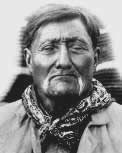 By 1871, Congress created the Appropriations Act, which forced America's Indigenous people onto reservations when they were then made "Wards of Government," thus giving Congress more control over them and making it easier to take possession of their land. Example: See James Leonard Pritchett a great-grandson of Chief Tabby.
By 1871, Congress created the Appropriations Act, which forced America's Indigenous people onto reservations when they were then made "Wards of Government," thus giving Congress more control over them and making it easier to take possession of their land. Example: See James Leonard Pritchett a great-grandson of Chief Tabby.
At the Black Hawk War Veterans first reunion at the Reynolds Hall in Springville, Utah, 1894 John Lowry spoke these chilling words, "In those early days it was at times imperative that harsh measures should be used. We had to do these things, or be run over by them. It was a question of supremacy between the white man and the Indian."
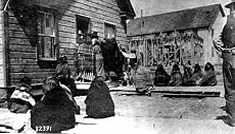 Suppose you were Indigenous person and lucky enough to survive settler colonialism. In that case, you are confined to a reservation and made to depend on government-run Indian agencies for scarce and sometimes contaminated commodities to survive. Your children are taken away and sent to boarding house schools with graveyards, all under the slogan "Kill the Indian, and save the man." There has never been any reconciliation, remorse, or even an apology from those who believe God led them to the "promised land." Watch our heartbreaking video on boarding schools.
Suppose you were Indigenous person and lucky enough to survive settler colonialism. In that case, you are confined to a reservation and made to depend on government-run Indian agencies for scarce and sometimes contaminated commodities to survive. Your children are taken away and sent to boarding house schools with graveyards, all under the slogan "Kill the Indian, and save the man." There has never been any reconciliation, remorse, or even an apology from those who believe God led them to the "promised land." Watch our heartbreaking video on boarding schools.
The Mormon's Black Hawk War in Utah was a disgraceful affair. To this day, the Church of Jesus Christ of Latter-day Saints has never rescinded Brigham Young's "Extermination Order No. 2" on the Timpanogos since 1849. Their mission to 'save the heathens from hell' is a colonial lie that needs burying. It was a thinly veiled excuse for looting Indigenous resources and land, reducing their populations, and imprisoning them on reservations. It was all an elaborate cover-up to get rich - "Gold, God, and Glory." The apparent hypocrisy, such as Mormons giving Indigenous people a book that says, 'Thou shalt not steal," serve to remind us of the shrewd manipulation, dehumanization, and subjugation of the Indigenous Tribes of Utah while appearing to serve a benevolent cause.
Insulting and denigrating the Timpanogos people needs to stop. It's unacceptable to use racist terms or publish fake stories and photographs. We have a responsibility to compassionately understand the irreversible harm done to the Indigenous people of Utah and stop the habit of sanitizing the Black Hawk War, which was a gross infringement on their aboriginal rights and sovereignty. Understand, We Can Forgive, But Never Forget.
It's Time To Look Beyond Religion For Answers
Carlos Barrios, Mayan Elders Council, describes in his book The Book of Destiny that "Somewhere along the way, Western society began to assume that human beings have the right to dominate plants, animals, even each other. The result of this materialist outlook is an economical, ecological, social, and moral crisis that has caused the downfall of other cultures." See Phillip B Gottfredson In The Heart of Mayan Country
One of the most compelling take-a ways of Phillip B Gottfredson's book My Journey to Understand Black Hawk's Mission of Peace is his detailed description living with Indigenous people learning their deep, sacred connection to each other and Mother Earth.
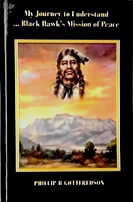 Phillip wrote about the natural order, "When the world was created, Creator touched it with his hand, and so it is sacred and spiritual. The Land is our home, our mother, nourishing all her children. The Land is sacred and belongs to all who inhabit it."
Phillip wrote about the natural order, "When the world was created, Creator touched it with his hand, and so it is sacred and spiritual. The Land is our home, our mother, nourishing all her children. The Land is sacred and belongs to all who inhabit it."
"Native American culture is a perfect example of total spirituality without religion." Elders of the shoshonee and other Tribes, invited me to participate in numerous ceremonies. It was life-changing. The spiritual experiences I had humbled me, and profoundly changed my understanding of what it means to be human, and opened my eyes to the sacred connection we have with Mother Earth. Understanding Native American time-honored traditions is essential when establishing meaningful relations with them, especially for educators with Indigenous students. See Native American Ethics and Protocols.
Honesty, love, respect, courage, truth, wisdom, and humility, are ancient traditional virtues and values that Black Hawk and Indigenous people have honored throughout their history.
Sadly, scholars, historians and writers ignore that the age-old message of Indigenous America is about 'connection, relationship, and unity.' All people are one. All are the direct living descendants of our Creator. Lakota Chief Joseph said, 'We have no qualms about color. It doesn't mean anything."
There can be no doubt that this was Chief Black Hawk's message when he made his last ride home to pass out of this world in peace. In severe pain, dying from a gunshot wound to his stomach. In the final hours of his life, Chief Black Hawk made an agonizing hundred-and-eighty-mile journey by horseback from Cedar City in southern Utah to Payson. He advocated for peace and an end to the bloodshed. This heroic journey was Black Hawk's 'mission of peace.' Still, colonialists were too arrogant to see what it meant to be human. Chief Black Hawk died on September 26, 1870. He was buried at Spring Lake, Utah.
We 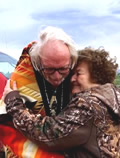 can learn much from First Nations people if we get out of our heads and listen with our hearts. We need to help each other. We are all interconnected and interdependent upon one another. We need each other to survive and live. We need each other as equals. We are all in a relationship with each other. And each becomes a relative by relationship. We must help each other learn the truth and heal from the injustices. We must find a pathway to forgiveness and help build that bridge between our cultures with compassion, honesty, and mutual respect for humanity.
can learn much from First Nations people if we get out of our heads and listen with our hearts. We need to help each other. We are all interconnected and interdependent upon one another. We need each other to survive and live. We need each other as equals. We are all in a relationship with each other. And each becomes a relative by relationship. We must help each other learn the truth and heal from the injustices. We must find a pathway to forgiveness and help build that bridge between our cultures with compassion, honesty, and mutual respect for humanity.
"I see a time of seven generations when all the colors of mankind will gather under the sacred tree of life, and the whole earth will become one circle again." -Chief Crazy Horse, Oglala Lakota.
Phillip B Gottfredson Author/Historian
How do I know these things? I lived with them for over 25 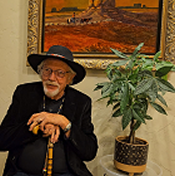 years; I found the truth I was looking for in the traditional teachings of the Timpanogos and Native Americans throughout North America and the Mayans in South America; I learned what true freedom looks like. I found my true self. While living with them, I learned how to walk my path in a good way, with purpose, and for the good of all. I learned to love myself and others. I am proud to say I voluntarily and willingly assimilated into Native American culture without shame or regrets. No, I don't pretend to be Native American, a wannabe. I wannabe free! I'm just not as white as I look. It has been the best years of my life. History is not just the study of the past; it's also the ethnology of people, present traditions, rituals, and legacies. But it's not about me, it's not about you. It's about all of us, the human race, the circle of life. I'm only the messenger. -Phillip Gottfredson. ~ See It's Not About Me
years; I found the truth I was looking for in the traditional teachings of the Timpanogos and Native Americans throughout North America and the Mayans in South America; I learned what true freedom looks like. I found my true self. While living with them, I learned how to walk my path in a good way, with purpose, and for the good of all. I learned to love myself and others. I am proud to say I voluntarily and willingly assimilated into Native American culture without shame or regrets. No, I don't pretend to be Native American, a wannabe. I wannabe free! I'm just not as white as I look. It has been the best years of my life. History is not just the study of the past; it's also the ethnology of people, present traditions, rituals, and legacies. But it's not about me, it's not about you. It's about all of us, the human race, the circle of life. I'm only the messenger. -Phillip Gottfredson. ~ See It's Not About Me
| *NEWS* |
RESEARCH & UPDATES |
Battle Creek Canyon &
Fort Utah Massacres
The author, Phillip B Gottfredson, consulted the Timpanogos Tribe to get their perspective on this event. "It seems unlikely that Little Chief or his son, back on the Provo River, would lead Scott to his own people unless they were being threatened." MORE>
 This is NOT Timpanogos war Chief Black Hawk, aka "Antonga." This is a photo of a Kiowa Apache. Taken in 1875 at Fort Sill, Oklahoma. Antonga Black Hawk died in 1870. This is NOT Timpanogos war Chief Black Hawk, aka "Antonga." This is a photo of a Kiowa Apache. Taken in 1875 at Fort Sill, Oklahoma. Antonga Black Hawk died in 1870.
|
This Months Featured Topics
The Timpanogos Nation Is Not Ute!
The Timpanogos Nation clearly states and documents that they and the Ute Tribe are entirely distinct; they do not share historical origins, genealogies, bloodlines, or cultural practices. Claims that suggest a connection between the two are factually incorrect. See The Timpanogos Nation Is Snake-Shoshone
Contact | Terms of Use
| Acknowledgements
| Join us on Facebook
*Powered by InMotionHosting.com